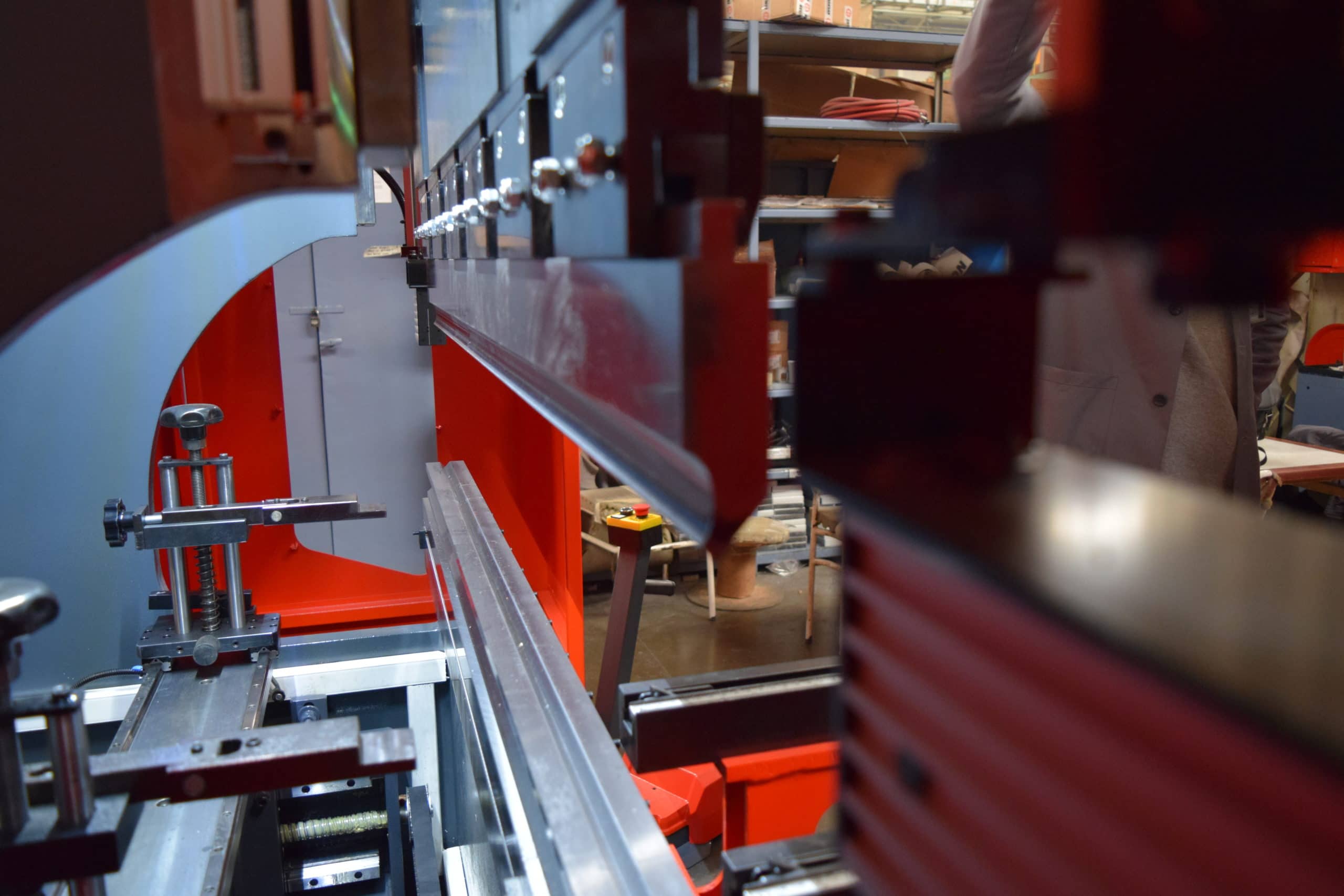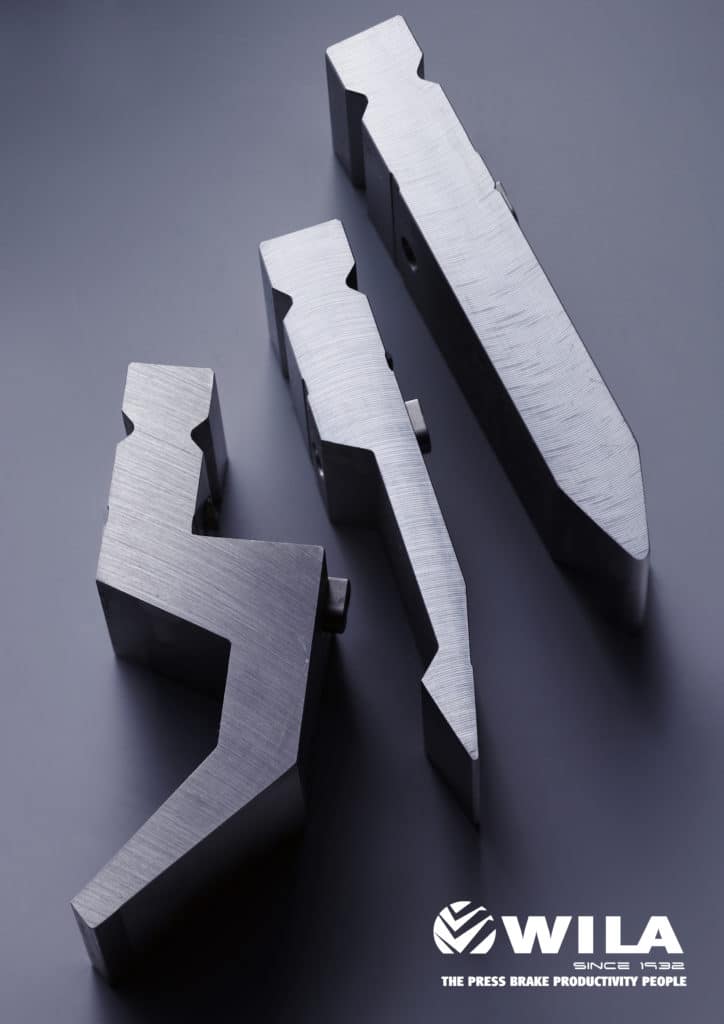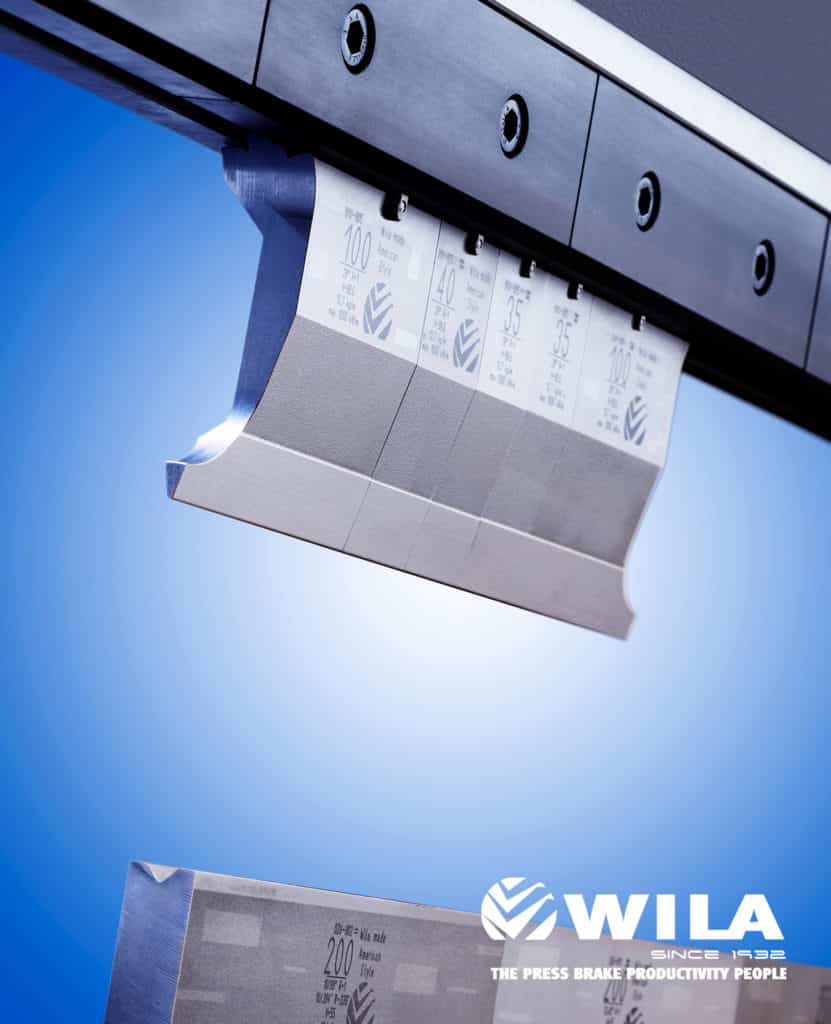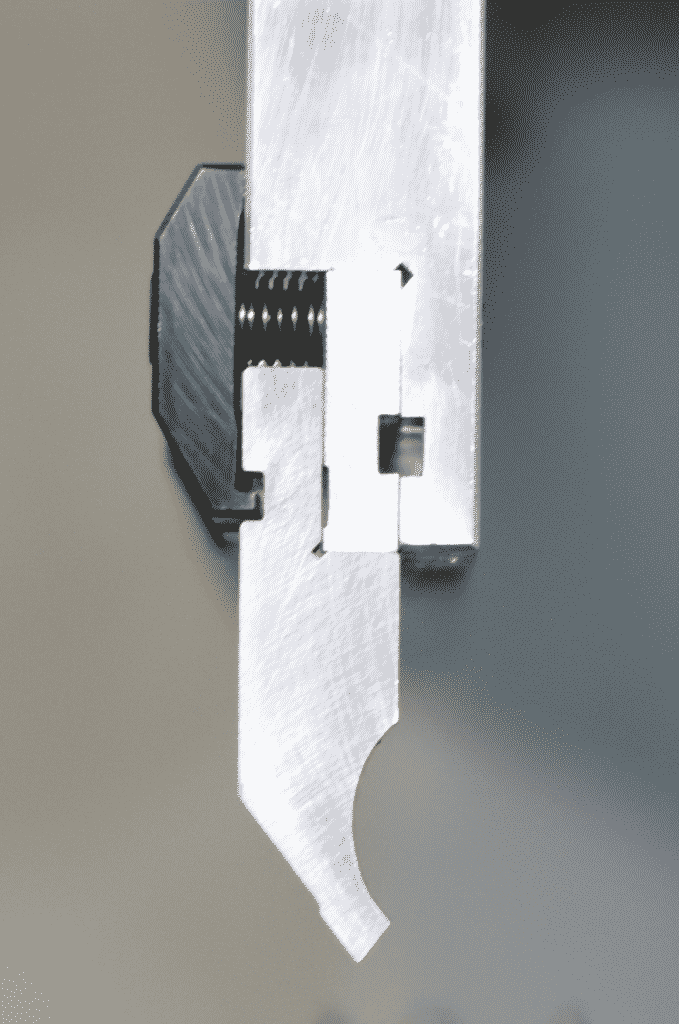The Most Essential Part of a Brake Are the Punches
You’ve decided to buy a press brake. You’ve budgeted, saved, obtained a loan—done whatever it takes to buy the very best piece of equipment on the market. It reminds you of when you bought your first car—you have invested not just money, but also your heart and soul into getting the perfect machine, one that you will be proud of as it serves you for a very long time.
Just like that car, once you’ve bought your press brake, you might decide you need to accessorize it a little, add a few bells and whistles to spruce it up. A mistake that some first-time car owners make, though, is buying cheap tires. They rationalize that as long as they do the job for a while, they will be okay. After all, they are a consumable—something that will wear out and be replaced time after time, so they must not be all that important. It’s the car itself that has all the power, that does all the work. The one thing the naïve car buyer overlooks, however, is even though the car provides movement, the only thing touching the road are those tires. Without them, the car itself is useless.
Press brakes are the same way. The mechanism itself provides all the power to bend metal, but aside from a little help from the back gauge and maybe some support arms, the only thing to actually touch the workpiece is the tooling. Just like a poor tire choice can hinder or cripple a car, likewise, not having the right tooling can ruin a job or leave the brake sitting idle while a replacement for a faulty or broken punch or die is ordered.
It is the press brake punch—with the assist of the die—that bends the metal to exactly the right shape for the job at hand while withstanding the tremendous pressures put upon it by the press brake. Having the right press brake punch is essential to creating the most accurate part.
Punch Types
Unlike punches for an ironworker, where there are a limited number of shapes that can be had, press brake punches come in an extremely wide variety of forms. Punches have been designed to fabricate any bend imaginable, and likely some that haven’t been thought up yet. All metal fabricators, whether they operate their own press brakes or job out their bending to others, should become familiar with the various types and their functions so they can better plan for upcoming work.
The most common type of press brake punch is simply known as a standard punch. Standard punches are quite a bit thicker through the body than at the tip, so they are able to withstand the higher tonnage that is required for bending thicker or longer workpieces. While flat on the outward-facing side, these punches are slightly concave on the inward side above the tip to allow for some folding back of shorter flanges.
While there are a wide variety of other press brake punches available, the basic types include:
- Acute punches, which are used for bending very tight angles, usually around 30°, though they can be used for smaller angles, as well as for ones as large as 60°. Even though the angle of the tip is very acute, the punch body itself above the tip is usually—but not always—fairly stocky, allowing greater tonnage to be applied in bending thicker materials. It’s ideal for producing a 30° angle in a workpiece that is to be flattened for hemming in a second operation.
- Gooseneck punches, which are used in making channels and U-profiles. The body of the punch extends out towards the front of the press brake with a large concave area facing the inside of the brake, allowing for larger flanges to be bent back into the space where a standard punch would normally be. While still a stocky piece of tooling, the gooseneck shape compromises the strength of the punch so it can’t handle quite the same tonnage as a standard punch.
- Narrow punches, which are thin tools that are straight along their entire length. Ideal for use in tight spaces, they are designed to perform final bends on a part where there is very little clearance left (such as closing up a box nearly all the way).
- Offset forming punches, which work with matching dies and usually have a “Z” shape. They are used to punch two (or more) set angles in a workpiece in the same operation.
- Radius top tooling, which are rounded for making a rounded bend in the workpiece. They sometimes have a matching bottom die but can also be used in an air-bending operation with a standard V-die.
- Sash punches, which are thin, straight punches that extend down to a tip that’s bent back towards the inside of the brake. They are able to bend around a corner, like a gooseneck punch, but their design allows there to be angles on both sides of the bend.
Punch Styles
Besides the specific functions of a punch there are other factors to consider, like the quality of steel that it’s manufactured from and whether it was treated to a hardening process. Press brake punches are also differentiated by style, which is a classification based on shape—not of the punch itself, but rather of its tang. The tang is the uppermost part of the tooling that is clamped onto when it is attached to the ram of the press brake. Each type of clamp or tool holder is designed to match the particular geometry of the tang of that style of tooling, so the different styles of punches are not interchangeable with different tooling holders.
The three main styles of press brake punches are the following:
- American Style press brake tooling is the original, traditional style used in North America over the years and is still in very wide use today. While it is relatively inexpensive compared to other styles, American Style tooling has a smaller clamping surface that makes it the least accurate when tooling is changed out.
- European Style press brake tooling is not only precision-ground to a tolerance close to ±0.0005″, but the punches have a much larger surface area for clamping. These factors make it much more accurate than American Style tooling and ideal for use with a CNC press brake. They are also extremely hardened for extra tool life, and their style allows for rapid changeovers.
- New Standard Style press brake tooling is also known as the Wila/Trumpf style. Developed by Wila with the intention of becoming the “new standard” in the industry, this style utilizes a specialty auto-clamping system for accurate tool seating and extremely fast changeovers. Like European Style, they are also precision-ground tools for even greater accuracy.
Other Selection Criteria for Punches
There are many other criteria to consider when purchasing press brake punches, from the precision used in the manufacturing of the tooling to whether you get tooling cut in segmented sections which makes for easier handling and is essential for box bending.
Another factor is whether or not all the punch and die sets have common shut heights, meaning the height of the punch and die combined when shut is the same, regardless of the set. Longer punches will be mated with shorter dies to match the common shut height. This feature allows a press brake operator to arrange several tools in a single setup without having to resort to shimming or adding risers to equalize the tooling shut heights. Stage bending—which is performing multiple bends on a single workpiece within the same tooling setup—requires common shut heights to avoid collisions.
Getting to the Punchline
It can take years of study—and practical application—for a press brake operator to truly understand and master all there is to know about press brake tooling. Knowing the ideal punch to choose from the tooling shelf for the job at hand factors in many different variables, from point radius and point angle to the workpiece shape and its bending sequence. Getting started in press brake operation can be fairly easy, however, with an operator learning to use some standard punches and V-dies to bend basic angles in sheets of metal while figuring out how to read a press brake tonnage chart. More advance bends using more advanced tooling can follow, a little at a time. Like any process in metal fabrication, acquiring the skill necessary to successfully operate a press brake comes in a great degree from a fabricator’s creative desire to take a slab of metal and turn it into something truly wonderful.









